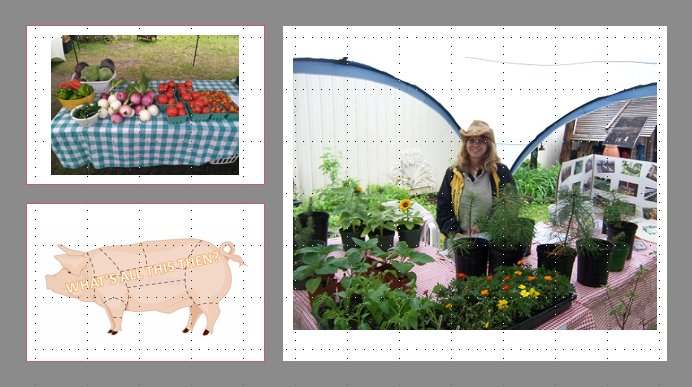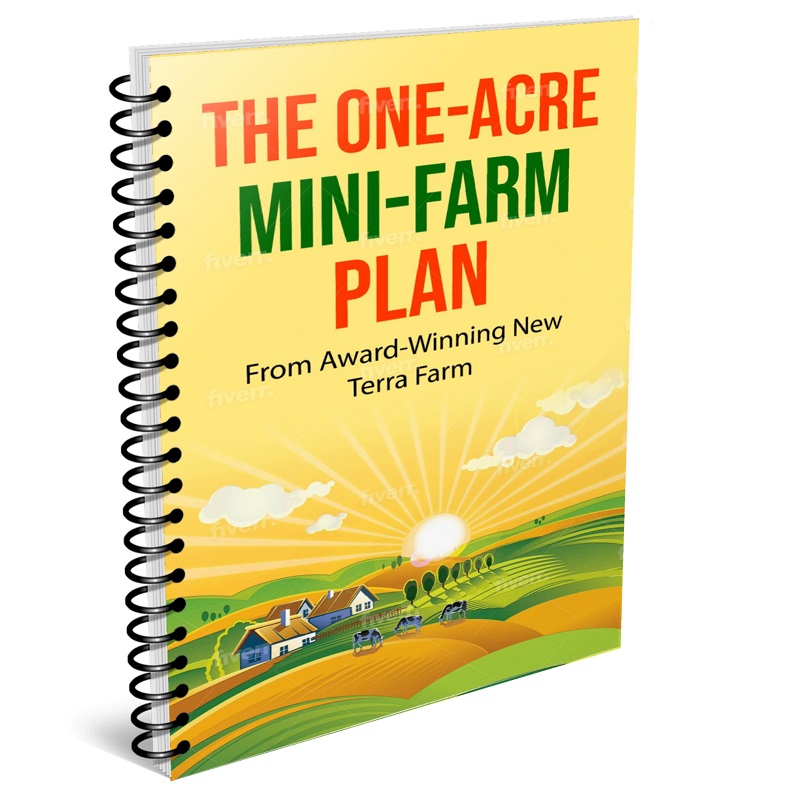Price Your Farm Products to Make a Profit From pastured pork to potted plants, what do you charge? From pastured pork to potted plants, what do you charge?The examples and analyses for 'How to Price Your Farm Products' is taken in part from Module 5 and Module 6 of my Bootstrap Boot Camp Success Plan Course. I’m going to come at the question of pricing your farm products a little backwards. Or perhaps the correct term is iteratively, because before you lock down on how to price your farm products, you need to: 1 - take a look back at your Vision and Mission - I covered that in a previous article you can read here 2 – and take a look forward at your financial goals - I’m going to cover that in another article coming soon. Because a farm of just about any size can be profitable; it's a matter of applying some management skills and basic economic analysis to build an operation that makes sense (and profits). But it’s a different question if you can realistically expect to grow your farm business to provide a full-time living. That takes another level of calculation. So your Vision, your Goals and your Prices are linked. We’ll get into that in the next article, but let’s get back to how to price your farm products. How to Price your Farm Products Realistically To Make a ProfitStart with an environmental scan. Research local prices for your product by calling markets and local producers. Make sure you are comparing like to like; factory-farmed Walmart chicken is not the same as free-range organic birdies. The purpose of the environmental scan is NOT to determine your price; rather it will provide a range of possible prices that your product will (probably) fall within. Determine your fixed costs, variable costs, gross profit margin, mark-up, and break-even point. Fixed costs are the costs that remain relatively stable regardless of how much you sell, and are incurred whether or not you sell anything. For example: tools, equipment, vehicle, office, land. Variable costs are directly related to production of your product i.e. consumable supplies, packaging, wages, seeds, hay, feed, etc. Variable costs change with levels of production. Gross Profit = sales minus all costs directly related to those sales. For example, if I sell a product for $150, and my costs are $90, my Gross Profit is $60. Gross Profit Margin = Gross Profit ÷ Total Revenue. Using the above example: $60 Gross Profit ÷ $150 Total Revenue = 40% Gross Profit Margin Markup = the difference between the selling price of a product and it's cost, expressed as a percentage. I generally aim for a 60% markup. Break Even Point = Fixed Costs ÷ (selling price per unit-variable costs per unit) Here's an example from selling New Terra Farm pastured pork. The following is a breakdown of what it cost me to raise 4 weaner pigs from about 40 lbs. to 220 lbs. live weight. Fixed costs
Total fixed costs: $600 I obviously have to pay for equipment up-front to raise my piggies, but these items will all last at least 5 years with reasonable care. If I raise two batches of 4 pigs per year, my fixed costs per batch = $600 ÷ (2x5) = $60 per batch Variable costs
Total variable costs $1,210 Free One-Acre Farm Plan Get my FREE One-Acre Farm Plan and learn how to raise pigs, chickens and more, integrated with an organic market garden, to
make more money from your small property. Enter your best email and the free report will be sent to you right away Calculating Costs and ProfitsHere's where you figure out the price you will sell your pigs for to make a profit. First, let's figure out cost price per pound. Assumptions:
Here's the math:
Total cost per 4 pigs = $1,270 Total yield (hanging weight) of pigs (160 lbs. x 4) = 640 lbs. Total cost per lb. = $1,270 ÷ 640 lbs. = $1.98/lb. This is what it cost per pound to raise these piggies. Now let’s add a markup of 60%. $1.98 a pound x (1+60%) = $3.17 lb. I would probably round this up to $3.25 Gross profit per batch = 640 lbs. x ($3.25-$1.98) = $812.80 Note that for illustrative purposes labour was not included in this analysis. One point to notice, this first batch paid for all the equipment required for start-up. Final step, the reality check: after you do this analysis, you will want to go back to your environmental scan and check prices for similar products in your area. Don't be stressed if your calculations put you on the high side of prices in your area. That's where promotion and marketing come in - i.e. you have to realize, and communicate to your customers, what you are really selling. If you are wildly out of line, your 60% target margin may need to be adjusted. But you must price your farm products to make a profit and stay in business. More resources for the small growerChapter 9 - Seven Cash Cow Crops: The Self-Sufficient Backyard Raise chickens, pigs and a productive organic garden: The Homesteader Book Bundle Fresh egg for breakfast (and maybe barter): The Eggs Factory If you need to build it on your homestead, the plans are here: 16,000 Woodworking Plans
|
See something you like? Share!
Recent Articles
-
Farm grown reviews of products recommended by New Terra Farm
Dec 04, 25 06:26 AM
Find great farm and garden products in my farm grown reviews -
Best Chicken Coop and Accessories for Small Farms and Homesteads
Nov 30, 25 09:18 AM
Looking for the best chicken coop? Here are the top coops, accessories, nest boxes, and gear to build a safe, productive poultry setup. -
Community Supported Agriculture Marketing Ideas To Sell Out The Season
Nov 05, 25 05:18 AM
Authentic Community Supported Agriculture marketing ideas to grow loyalty, boost sign-ups, and sell out your CSA every year


